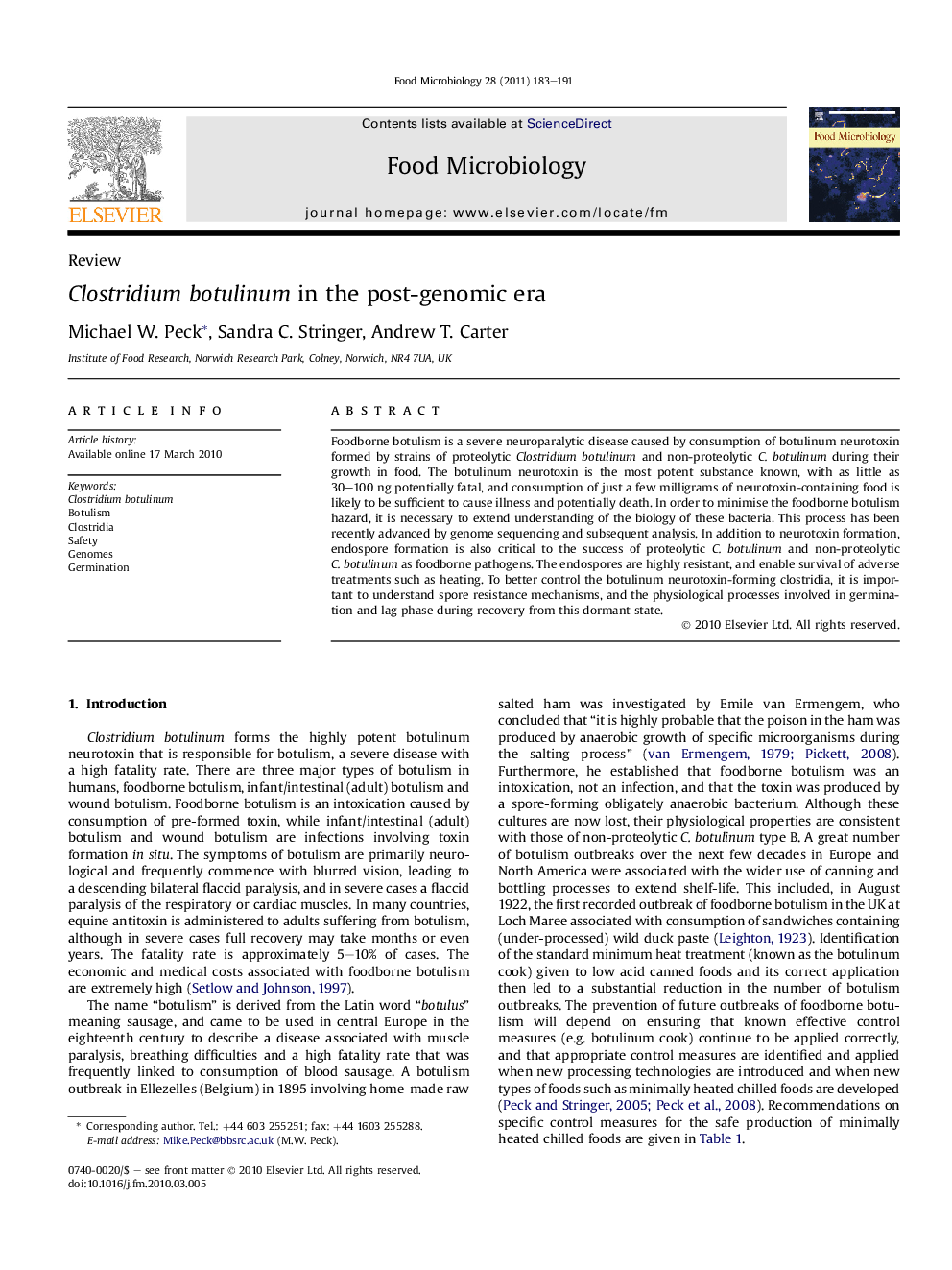| کد مقاله | کد نشریه | سال انتشار | مقاله انگلیسی | نسخه تمام متن |
|---|---|---|---|---|
| 4363230 | 1301548 | 2011 | 9 صفحه PDF | دانلود رایگان |

Foodborne botulism is a severe neuroparalytic disease caused by consumption of botulinum neurotoxin formed by strains of proteolytic Clostridium botulinum and non-proteolytic C. botulinum during their growth in food. The botulinum neurotoxin is the most potent substance known, with as little as 30–100 ng potentially fatal, and consumption of just a few milligrams of neurotoxin-containing food is likely to be sufficient to cause illness and potentially death. In order to minimise the foodborne botulism hazard, it is necessary to extend understanding of the biology of these bacteria. This process has been recently advanced by genome sequencing and subsequent analysis. In addition to neurotoxin formation, endospore formation is also critical to the success of proteolytic C. botulinum and non-proteolytic C. botulinum as foodborne pathogens. The endospores are highly resistant, and enable survival of adverse treatments such as heating. To better control the botulinum neurotoxin-forming clostridia, it is important to understand spore resistance mechanisms, and the physiological processes involved in germination and lag phase during recovery from this dormant state.
Journal: Food Microbiology - Volume 28, Issue 2, April 2011, Pages 183–191